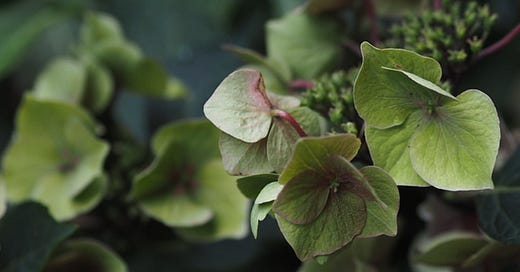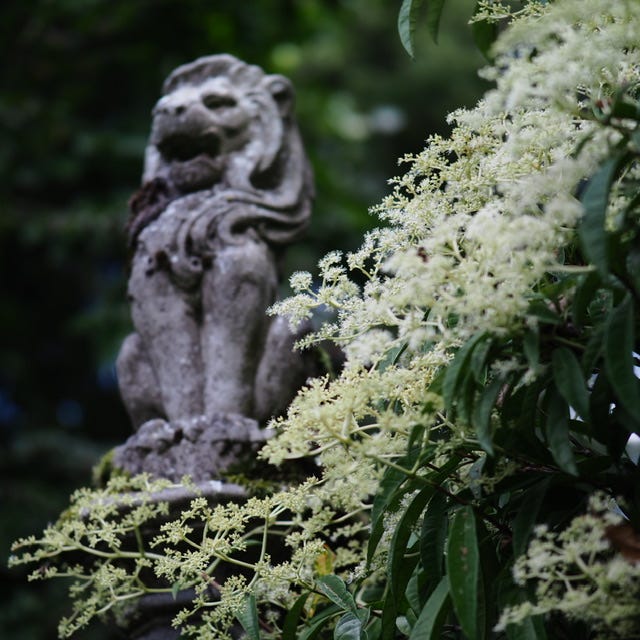This post contains affiliate links
Notwithstanding the September heatwave – rather hastened by it, if I had to hazard a guess – the hydrangeas in my garden are beginning to take on their autumnal appearance. Annabelle’s flowers are fading from cream back to green, Zorro’s are travelling in a similar direction, albeit from a different, and decidedly more pink point of origin, and quercifolia – the one with the quirky (okay, oak- or quercus-like) foliage – skipping the green and going straight to crispy and brown, as you’d expect from a hydrangea that spends much of her day in the sun. Twenty minutes up the road, the hydrangeas of Great Comp’s woodland glades have been entirely more sheltered from the effects of the summer sun in the cosy, dappled light of their understory shade. I went to visit them today, pushing my way through the dense new leaves of freshly sprouting Tetrapanax papyrifer beneath the towering skeletal remains of its winter-ravaged stems.

And here I was flummoxed by a plant clinging to the masonry of a folly wall, its combination of long, thin evergreen leaves and creamy panicles of pea-sized, highly scented flowers with their long stamens finding no match in my mental database. The plant ID function on my phone was flummoxed too, as were a couple of knowledgeable friends I messaged, but eventually the kind of google activity that locums these days for a botanical key announced Pileostegia viburnoides, a climbing relative of the hydrangea (still listed as a hydrangea in some nursery catalogues). I’m often asked for an evergreen alternative to the climbing Hydrangea anomola subsp. petiolaris and this offers a useful, and slightly more hardy (cold and frost tolerant) alternative to the similarly excellent evergreen climber, Hydrangea seemannii, though one that apparently takes just as long to establish. Let it flower, and it’ll be a magnet for pollinating insects. But if you’d like to encourage faster and more luxuriant leafiness, reduce the flowers with some judicious snipping for the first year or so after planting, and feed well. The catalogues say sun or shade and not too fussy about soil, but anecdotally the foliage will be greener in partial shade and that neutral-ish pH, moderately fertile, moist and well-drained unicorn dust will make it feel most loved. Plant one now. Unless you plan to move within five years.








Can't believe I've not been there yet given how frequently I've been in Sevenoaks of late! Looks lovely x